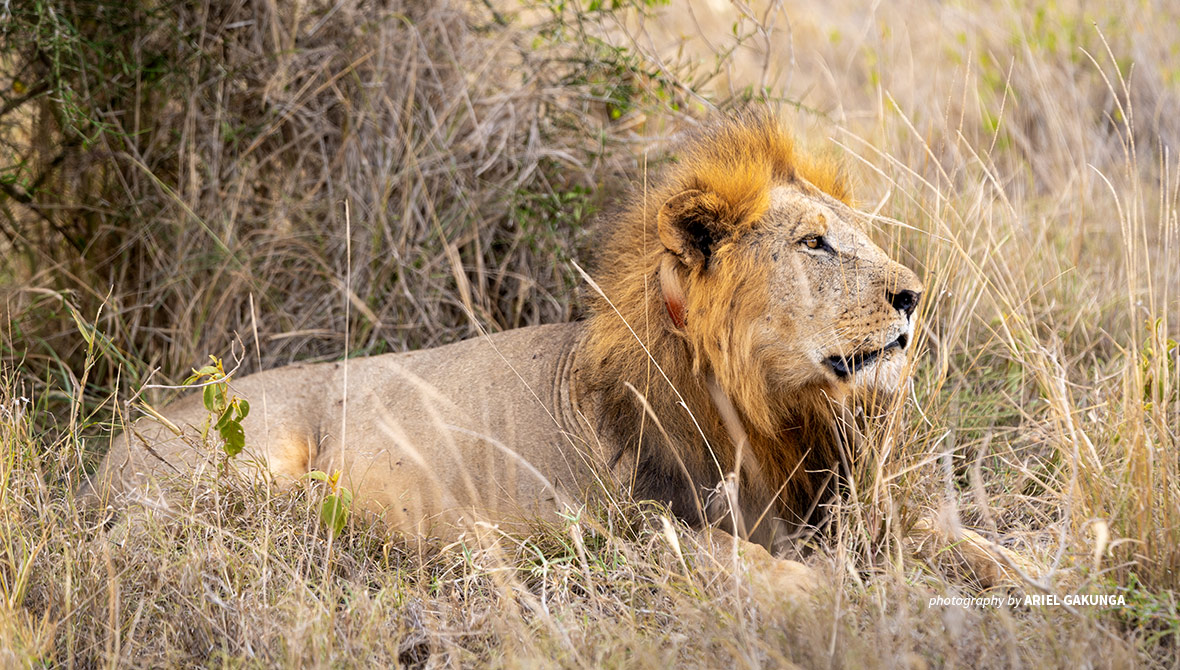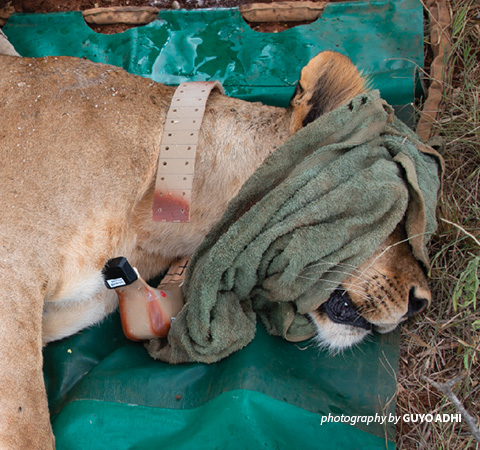Satellite-linked lion collars save communities and carnivores

To collar a lion, you first have to find it. And anyone who has gone on safari will tell you that you could drive around a park for an entire week and see every species except this highly elusive big cat.
But why do we need to fix these GPS-enabled gadgets on lions? Collaring is an effective way to track lion movement and mitigate human-wildlife conflict where lions exist close to human settlements. The collars send real-time location updates to park authorities who can warn communities about the presence of lions in the vicinity and deploy wildlife officers or community conservancy scouts to respond to any incidents immediately.
By tracking lion movements, authorities can avert potential incursions and attacks, allowing people and lions to coexist. In addition, the collars can collect important data on lions, including their behavioral patterns, which can help inform policy and funding decisions.
African Wildlife Foundation’s Kenneth Kimitei is an ecologist overseeing transboundary wildlife conservation and community engagement activities in the Tsavo-Mkomazi landscape. He explained that human-lion conflict is prevalent within the Tsavo Conservation Area, and incidences are localized to specific areas, but there is minimal data to develop mitigation strategies.
AWF has worked with LUMO Community Wildlife Sanctuary, a group conservancy sandwiched between Tsavo West National Park and Taita Hills Wildlife Sanctuary, since 2017 to improve governance and wildlife management.
Based on the reports that [Kenya Wildlife Service] is receiving, especially for compensation, LUMO is one of the places where conflicts are very high, noted Kimitei.
In March 2021, AWF and Kenya Wildlife Service collared two adult lions — a male and female — from two different prides within the conservancy. Collaring the lions would be a first-line defense in bringing communities some peace of mind. “Two years ago, we had a lot of human-lion conflicts within this region and there was a lot of outcry from the community,” said Kimitei, “so we are taking LUMO as a pilot area.” In tandem with tracking the movements of these two carnivores, camera traps will be set up to study prey distribution.
But first, a veterinary officer from Kenya Wildlife Service, Dr. Jeremiah Poghon, aided by a team of scientists and assistants, must fit the lions with collars — a delicate procedure that requires the cats to be immobilized with a combination of drugs for about one hour. Communications personnel from AWF accompany the veterinarian's team, eager to document every step of the operation.
How to collar a lion
Before Dr. Poghon and his assistants were deployed, game wardens identified and tracked the lions to be collared. They found the male first, after two days of dawn-to-dusk searches aided by staff from AWF’s team in Tsavo. The lion was lounging under a tree in the company of a female, about 200 meters away from our vehicles, and yet invisible to all but the keenest eye. Being the same color as the savanna grassland vegetation in the park, lions are great camouflage artists.
We usually target the adults as they are the dominant ones [causing] most of the conflicts. We pick a male and a female from different prides, just to get the best representation of all the prides causing problems, Dr. Poghon explained.
His team drove slowly towards the carnivores, trying to get as close as possible without spooking them. The closer you are, the more accurately you can shoot at the targeted lion with a tranquilizer gun.
The cats tried to run for it once they realized the Land Rover was heading their way but years of experience have made Dr. Poghon an accomplished shot. One well-placed hit at the flank, and the male went down despite a valiant attempt at escape. By this time, the female was nowhere to be seen but was believed to be close by, keeping an eye out for her companion.
After the animal is immobilized, you have about an hour and a half to complete your business before it wakes up. We watched as the veterinarian and his team worked quickly and efficiently to fit the collar on the male and take measurements of various parts of its body. They recorded its length, girth, and the size of its teeth, paws, and claws. They took note of the general health of the lion and injected it with routine antibiotic drugs to stave off any infections.
Being in such close proximity to a lion, even a sleeping one, is awe-inspiring. This was a particularly well-fed one, a beneficiary of the abundant prey in the conservancy, and looked much bigger than lions usually do in photos. Its canine was the length of my index finger, and its paw was wider than the outstretched hand of a grown man. I finally understood why a lion can take down prey much bigger than itself.
The entire operation was concluded in 45 minutes, and after shooing us away to a safe distance, Dr. Poghon injected the animal with drugs to wake it up. It can be hard to predict how long it will take an animal to get back on its feet, and this one was a particularly heavy sleeper. Best practice dictates that the vet and his team should stick around until the animal recovers to ensure that no lingering effects of the tranquilizer drug remain and to protect it from opportunistic attacks from other animals like hyenas. Lions are notorious nappers and usually pass a hot day fast asleep under a tree, tranquilizer or none.

Lionness immobilized for collaring operation
Three hours later, we were still at the scene, watching over the still snoozing lion. We finally called it a day and left Dr. Poghon and his team still on guard duty. The following day, on our way to collar the female found around 10 kilometers away, we spotted the lion that had been darted down. This time the collared lion was accompanied by two females. It seemed that his new accessory had made him even more popular with the ladies.
“Lions are usually very active at night but if you have to follow a lion at night it’s very difficult,” said Dr. Poghon. The satellite-linked collars will give authorities an opportunity to share the real-time position of the lion with the local community.
“We’ll just tell them within your neighborhood, we have lions that are approaching, and we can even send rangers to specific area to try and push them back into the park,” he continued.
“At the end of the day, we should be in a position to develop strategies on how we can mitigate the conflicts,” Kimitei said. For instance, if the collar data shows that lion incursions are prevalent in homesteads, installing predator-proof bomas would be a viable strategy to minimize the risk of deadly attacks and retaliatory killings of lions. If the conflicts are occurring in pastureland, especially when livestock are grazing, the next step will be to assess the contributing factors. “We will be having quarterly meetings with the communities where we can relay this information,” added Kimitei.
Already, AWF works closely with conservancies, local leaders, and community members to mitigate human-elephant conflict in Tsavo. The two newly collared lions contribute to the organization’s ongoing collaboration with wildlife management authorities for long-term ecosystem management. Said Kimitei, “We need to make sure that people live harmoniously with wildlife.”
>Update: Explore how lion collaring has continued to support conservation in 2024